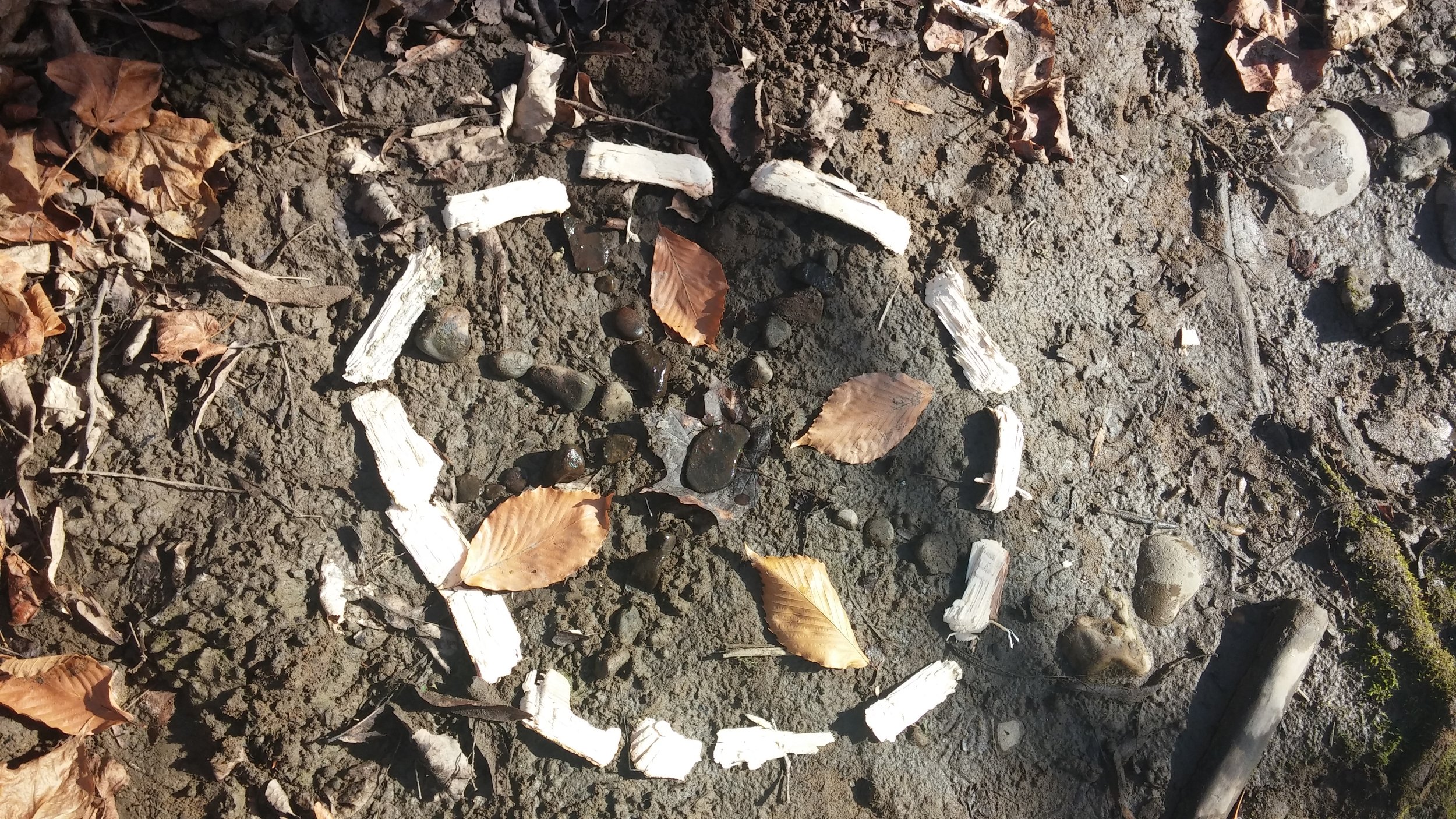
Sacred Tea Ceremony
Many of us think of the Japanese tradition when we hear “Tea Ceremony” and they definitely have one of the worlds most beautiful and sacred ways of making tea a healing practice. Tea ceremonies have been done in different ways in many other cultures also. The English are famous for their afternoon teatime and a tea culture exists in many other countries where tea making is sometimes ritualized and sometimes just a part of daily life as is our American coffee culture. Many ‘hip’ communities in the United States now have “tea rooms” where people can gather and drink tea together while relaxing and visiting. There is even an “American Tea Ceremony” now that has been adapted from the Japanese version.
Aralia Nudicaulis ~The Wild Ways of American Sarsaparilla
Botanical Name: Aralia Nudicaulis. A member of the Araliaceae or Ginseng family
Status: Native to North American in boreal forests. It is found beneath hardwoods in rich soil.
Common names: Wild Sarsparilla, American Sarsparilla, Small Spikenard, False Sarsparilla, Wild Licorice, Rabbit Root
Description: A perennial that grows in the woods of the Northern United States and Canada. The leaf stalk grows up to 18” tall with compound leaves that branch out into 3 groups of 5 each. The flower is an umbel that comes up beneath the leaves in groups of 3. The leaves die back in the summer leaving the flowers to ripen into purplish black berries. The root is gathered although all parts of the plant can be used. The main root grows vertically down just a few inches but there are secondary runners that grow horizontally. New plants emerge from these underground rhizomes forming interconnected colonies. Gather in the Spring or Fall.
Muscle-Skeletal Pain and the Gut Connection
Pain is a word that is used to describe a wide range of experiences that all humans encounter. There are many different patterns that occur throughout life that are considered to be painful and, ‘pain’ itself is not a disease, illness or syndrome but is a symptom of many. In the most literal sense, pain refers to any physical sensation that is unpleasant and causes one to take evasive action. It is also a signal that communicates to our brains that we must become aware of some dysfunction and make the necessary changes to make it stop. As herbalist and bodywork Tammi Sweet says, "Pain is a signal to change your behavior". That can mean many things including lifestyle and diet, but also mental and emotional behaviors, attitudes and thought processes. Evasive action is not always the most appropriate either. Changing our behavior can mean to stop evading something and explore more deeply into the core of any issue or injury in search of hidden or repressed feelings or matters. Sometimes what is called for is for us to actually move more deeply into ourselves and embody our unique Earthly form more completely. I taught Yoga for many years and always encouraged my students to find their 'edge' where they were not in pain but were stretching themselves, gently, beyond their comfort zone. This requires that we move our awareness into tight and sometimes scary places and re-associate or, some would say, occupy places that we may rather ignore.
The Medicine of Elecampane
The first day of spring is coming up quick on the calendar, but the weather in the Northeast doesn't seem to be aware of it. We have had one of the coldest and snowiest winters in many years and it has been hanging on and on. Along with the extended winter has come more coughs and colds and general dis-ease. One of my all time favorite remedies for colds, especially when the lungs are affected, is Elecampane. Elecampane was one of my very first plant allies as I used to suffer from asthma and chronic lung infections. Elecampane can remedy many different lung conditions and I have seen it work, at times, almost immediately. I am also deeply in love with the bright yellow luminosity of its flower and the strong, aromatic Earthy smell of its root. No matter how many times I have harvested this root, I am always enraptured by the first whiff of its perfume, and have been known to kneel right down with my nose to the dirt just breathing it in as deeply as I can.
Synergizing Germ Theory
Germ theory has been the major guiding force behind today’s biomedical research, practice and ambition. Germ theory evolved over centuries of philosophical exploration of the nature of human character and the origins of life. Humans have an inherent inquisitive longing to know and explain the source of their existence. At some point in the history of Western civilization and for many possible reasons, our collective paradigm adopted a reductionist perspective with which to examine the workings of the universe. Esteemed French philosopher, René Descartes (1596–1650), contributed the initial thoughts and writings on the philosophy of dualism. This binary system dissected the human organism into separated parts leading to the concept of the mind/body split and identifying the mind and body as contrary aspects; henceforth, ‘the dual’. Scientific exploration began to utilize this mechanistic structure of reduction to observe the fundamental operating systems of life as individual pieces, zooming in and dividing physiological functions to study them. This paradigm continues to govern our cultural endeavors toward all aspects of human life, and in the words of author and herbalist Stephen Buhner, we are all living inside Descartes psychosis.
Getting To Know White Pine
White Pine or Pinus strobus is the tallest tree native to the Adirondack forest;growing up to 150-200'+ with up to an 8' diameter, and was considered sacred by the First Nations of the Haudenosaunee(Iroquois). The White Pine was widely overharvested and more or less clear cut by European colonists but, thankfully, there are still several small old growth forests left in the mountains. These are also easy trees to grow and cultivated in any backyard in the Northeast, although they do best in acidic soil and, in fact, the needles are highly acidic when they fall(3.5) helping to create the necessary conditions for its survival.This will limit the growth of any plants below it with the exception of acid loving plants such as blueberries. I have 3 White Pines in my yard that I never have to mow under because the surface below them is nothing but a sweet bed of Pine needles.
Herbal Medicine and Social Justice
Plants and trees have been an integral part of human civilization and culture since life evolved on Earth. In fact, human beings have co-evolved with our green relatives and so, we have been genetically programmed to interact mutually and synergistically. We contain similar biological patterns that are expressed in a variety of adaptations. We all hold the exact same building blocks or elements, such as carbon, but arranged uniquely making us a separate system and yet, inextricably linked to all life. We and all other living organisms are descended from the same biological source; our ancestors, bacteria. Each and every species on Earth was sourced from these original life forms as they initiated new forms and structures evolving into more complex and creative functions.
Plantain~A Humble Plant With Big Medicine
Plantain-Broad Leaf Plantain(Plantago majus) Long or Lance Leaf Plantain (P. lanceolata)
Family:Plantaginaceae
Other names: Snakeweed, Whiteman's Foot, Round Leaf Plantain, Ripple Grass
Parts Used: Mostly the leaf but the seeds from Plantago psyllium raised commecially as a source of fiber and mucilage to be used as a laxative.
Qualities:astringent,decongestant,restorative, soothing diuretic, alterative, vulnerary, anti-inflammatory bitter, cold, dry and moist(it's mucilage moistens and soothes as it's astringency draws up),
Organ Affinity:Skin, Lungs, Intestines. Bladder, Kidney
Co-Creative Gardening
There are as many ways to garden as there are gardeners, but most garden "How to" books are pretty much the same with very useful information about when to plant and how to keep pests and diseases from your plants. Most of these books contain pictures of weedless gardens where the plants seem to be well aware of their boundaries and don't mix and match themselves or jump ship to the lawn. This is something that I always used to want but, after much frustration and back pain, I realized that this was just not my style.
Our Ears and the Herbs They Love
may never have become an herbalist had it not been for childhood ear infections. Ear infections are a common reason for many, many visits to doctor’s offices for young children especially under the age of five. They are also the cause of endless prescriptions for antibiotics. My daughter Hannah, at the age of three, was plagued with chronic ear infections along with other respiratory infections. We had been through several rounds of antibiotics and were referred to an ENT (ear, nose, throat specialist) who recommended that we have tubes put in her ears. At the time we didn’t have health insurance, and paying out of pocket for surgery would’ve been quite an expense. We were also told that Hannah had some minor hearing loss and that her speech and ability to learn would be impaired without the tubes.
Echinacea and All That
Echinacea has had a long history of documented use over the past 200 years. The Native Americans used it extensively and it was quickly picked up by the European settlers as a plant that could be used to heal just about everything. It is now among one of the most widely used and research herbal remedies in modern Western Herbalism and mainstream culture. Almost everyone has at least heard of Echinacea and many, many people have tried it in some form for its touted uses as a cold remedy, preventative and immune system stimulant among others. Some of these uses are accurate, some are overstated, and some are just plain marketing claims with no basis in tradition or research.
Adaptogens and the Many Ways We Dance With Life
The term "adaptogen" is used widely in traditional western herbalism and, adaptogens themselves are important medicines to integrate into almost any herbal formula or used as simples. In fact, I believe that these herbal allies are an imperative component of modern life. Adaptogens refer to a variety of plants and fungi, and the word adaptogen indicates exactly what these herbs do; they help us to adapt. When searching for the etymology of the word adapt(one of my favorite pastimes), I found that its Latin roots are from ad-, to and aptare-, join; to join. Also, from the Latin apere meaning to attach or bind. These meanings indicate an adjustment between two things. The current use of the word is defined by the free online dictionary as: to adjust (someone or something, esp oneself) to different conditions, a new environment, etc and to fit, change, or modify to suit a new or different purpose. Because I prefer to view life and the world from a cooperative perspective, I have inferred from these definitions that the concept of adapting or adapation is an interaction that occurs when two forces form a relationship and, in order to do so, both must be flexible and mutable enough to remain vital,alive and sovereign in the circumstances they have created in this bonding process.
The Art of Herbal Tea Making
My first experiments with herbal medicine involved the process of making tea. This is one of the oldest and least complex methods of imbibing the medicinal compounds of plants with water as the solvent. In all plant based medicine making there must be some means of breaking into the plant cell wall in order to extract and derive the valuable nutrients and healing constituents therein. These compounds must not only be extracted, but also held in some form of menstruum, such as water.
Late Summer Allergies
As late summer approaches and the scent of fall is on the wind, many of us are busy harvesting, preserving and eating loads of yummy veggies and berries. It is also high allergy season as I, a long time allergy sufferer, and many of my friends and clients are feeling a strong attachment to the nearest box of Kleenex or our handkerchiefs (save trees!) or even toilet paper, anything that will staunch the sometimes constant sneezing and dripping. It doesn't help that it has been the wettest, rainiest year I ever remember here in the Northeast. The air is heavy and full with lots of thriving mold and fungi sporing around happily while we all try to figure out how to grow webbed feet and gills.














